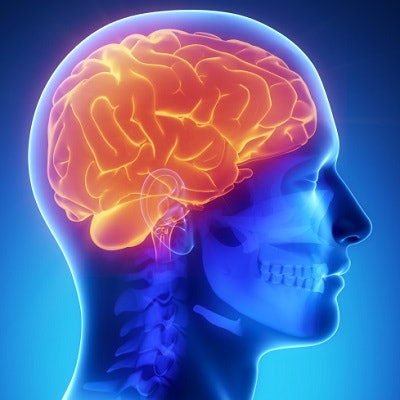
An interactive neuroimaging exercise can be a fun way for first-year medical students to better understand brain structures and learn anatomical terms about the brain, suggest findings published May 18 in the Annals of Anatomy.
Researchers, led by James Lewis, PhD, from West Virginia University (WVU) in Morgantown, reported that their online learning activity, named Find-the-Brain-Structure, led to increased confidence among students when reading MR images and approaching physicians for medical training.
"Overall, the exercise helped [first-year] students with the processes of evoking prior learned material, assimilating information, and inspiring group discussions about a patient's medical images," the Lewis team wrote.
Medical students have much to learn about the brain and its over 300 anatomical structures and associated terminology. At WVU, the researchers wrote that their strategy for teaching students about brain structures includes using whole-body donor specimens to learn about 3D structures and teaching students how to read 2D images, such as from CT or MRI.
The researchers reasoned that a basic understanding of radiology principles is needed as part of students' medical education. However, they added that gaps in learning neuroanatomy and translating this knowledge into clinical application persist, which may cause communication errors.
Lewis and colleagues wanted to assess the confidence of first-year medical students in learning and communicating neuroimaging outcomes with peers and faculty in a virtual classroom setting. The Find-the-Brain-Structure game is an interactive, small-group exercise that involves students identifying brain structures and other regions of interest in the central nervous system.
The researchers highlighted that the virtual exercise can be completed in as little as 30 minutes. Students have coordinated interaction with one or several physicians, including clinical faculty and qualified residents.
The team included survey data from 113 first-year students prior to performing the exercise and 92 students following the exercise. They reported that more students expressed increased confidence and comfort after completing the exercise.
| Student perceptions before and after the Find-the-Brain-Structure exercise | ||
| Survey response for "extremely/quite" | Preexercise | Postexercise |
| Confidence in reading MRI images | 3.53% | 18.48% |
| Importance of learning materials for career | 57.52% | 56.52% |
| Confidence in approaching physicians for guidance | 38.94% | 51.08% |
| Comfort level working with online, team-based activity with peers | 46.9% | 55.44% |
| Comfort level working with online, team-based activity with faculty and residents | 30.09% | 41.76% |
The researchers also said that the students showed more interest in neurology after completing the exercise while the interest in radiology and neuroimaging remained steady.
"Nonetheless, the greater exposure of pre-clerkship medical students to diagnostic radiology and neuroimaging will likely have a positive impact on advancing the education and training in radiology ..." they added.
The study's authors highlighted that their results indicated clear engagement with the first-year medical students, "representing a fun and complementary activity to otherwise purely didactic content and rote memorization of brain structures in wet lab settings."
They added that the Find-the-Brain-Structure exercise could be adjusted to account for a range of time and human resource constraints.
"This included accommodating the availability of non-clinical faculty and/or physicians, who have different levels of expertise in undergraduate education practices and/or neuroimaging," the authors wrote.




.fFmgij6Hin.png?auto=compress%2Cformat&fit=crop&h=100&q=70&w=100)



.fFmgij6Hin.png?auto=compress%2Cformat&fit=crop&h=167&q=70&w=250)











